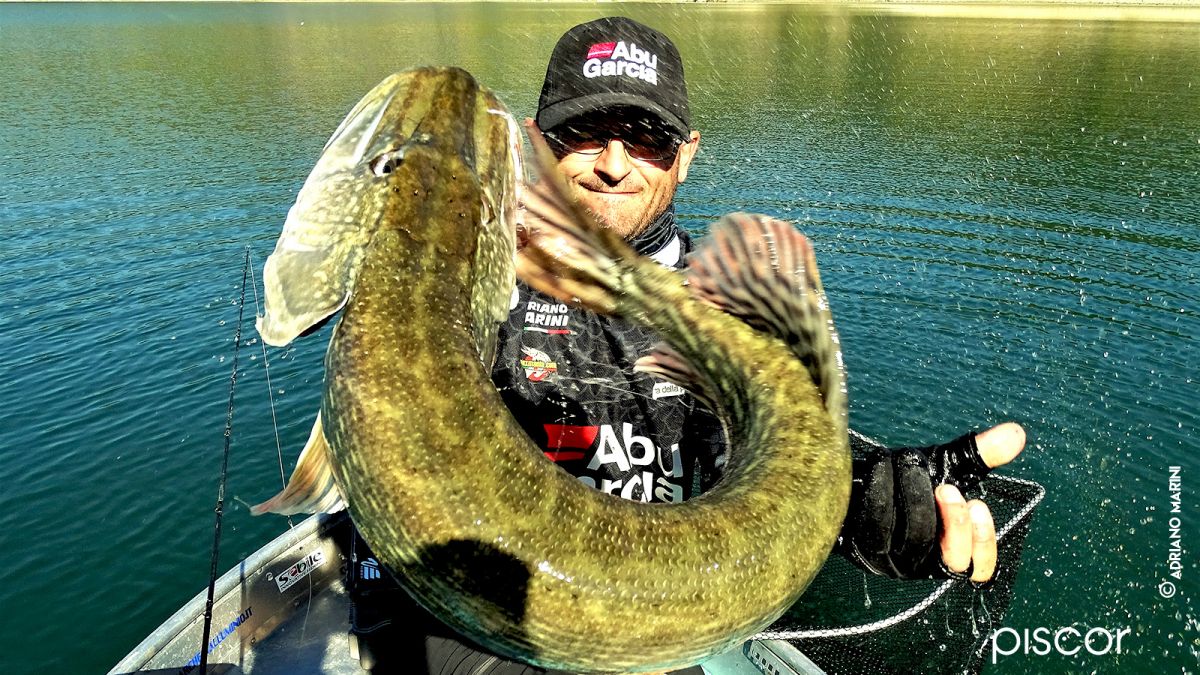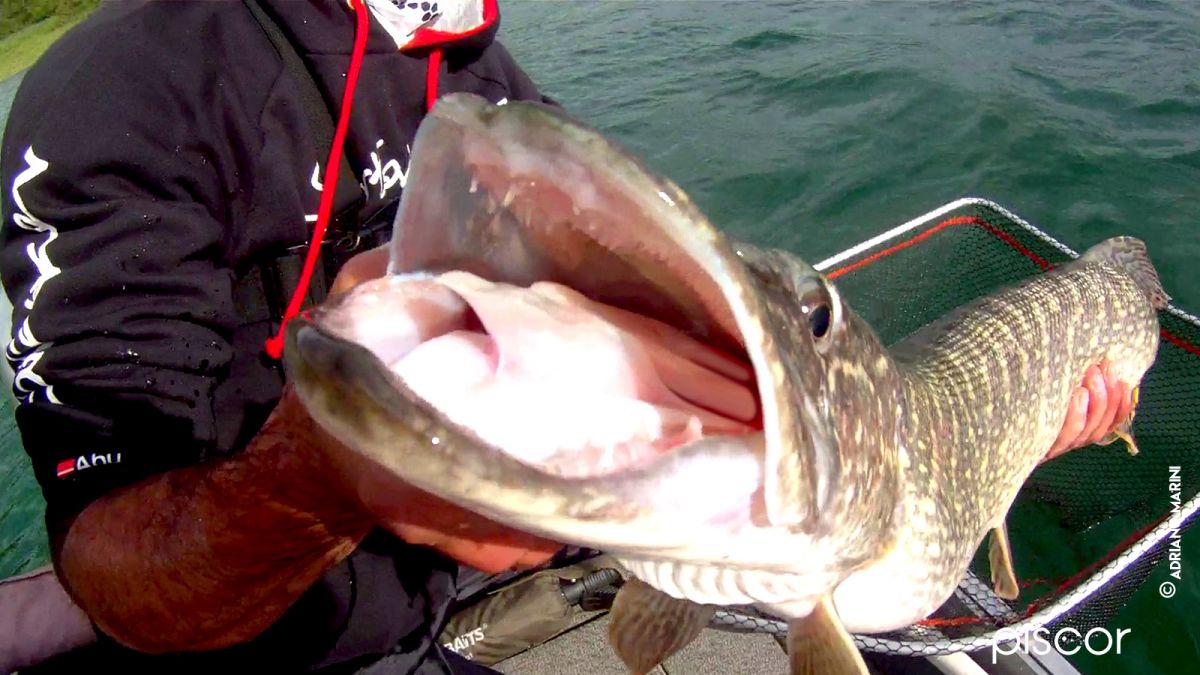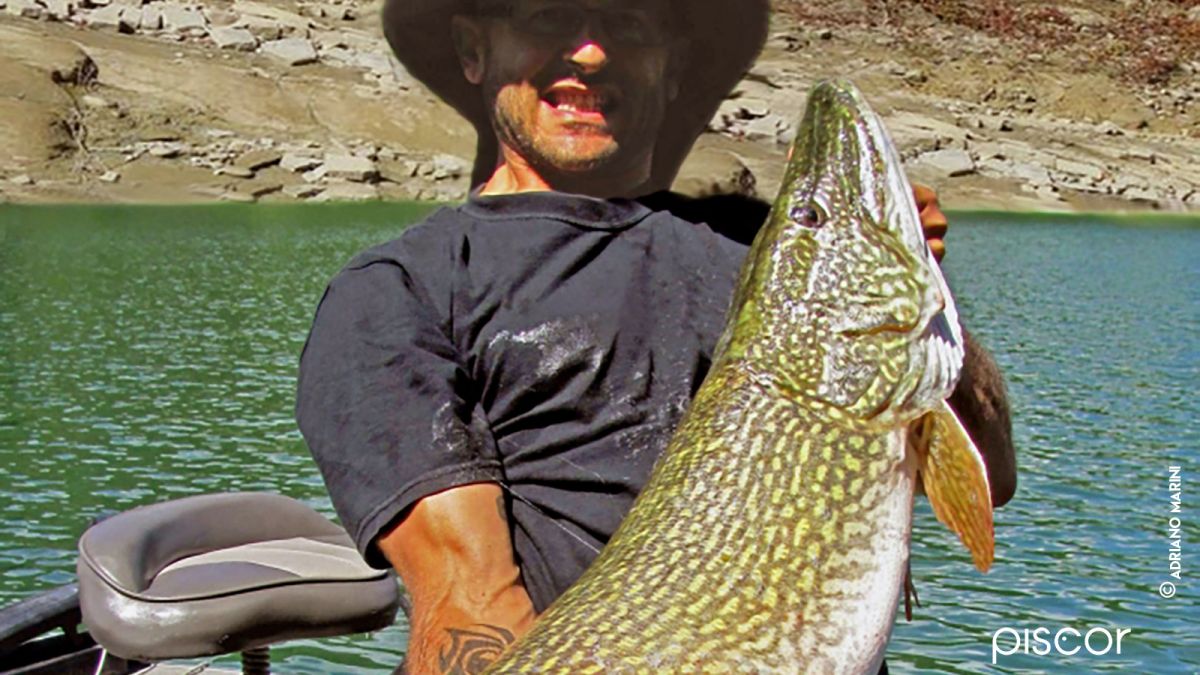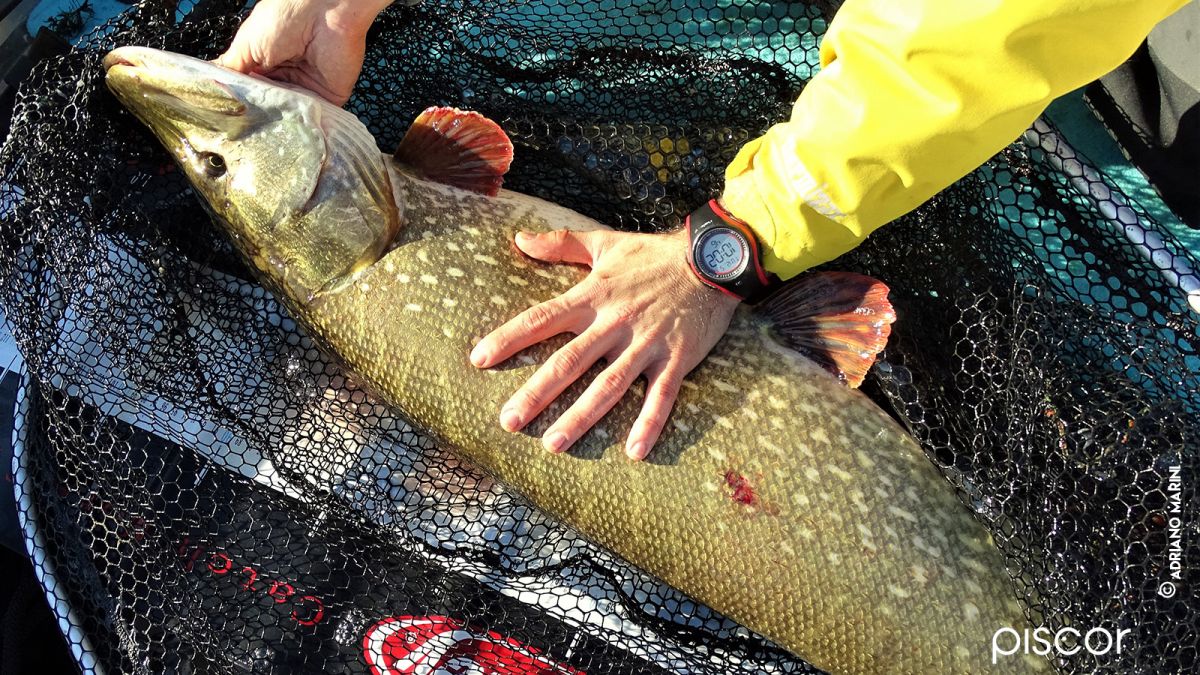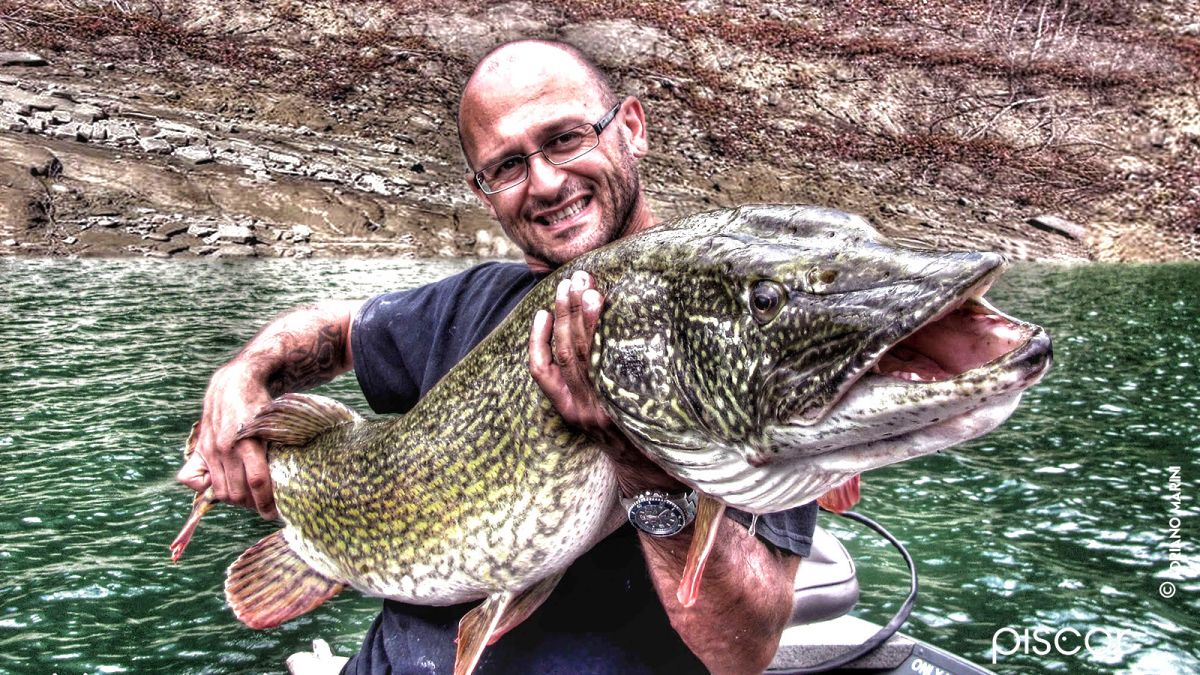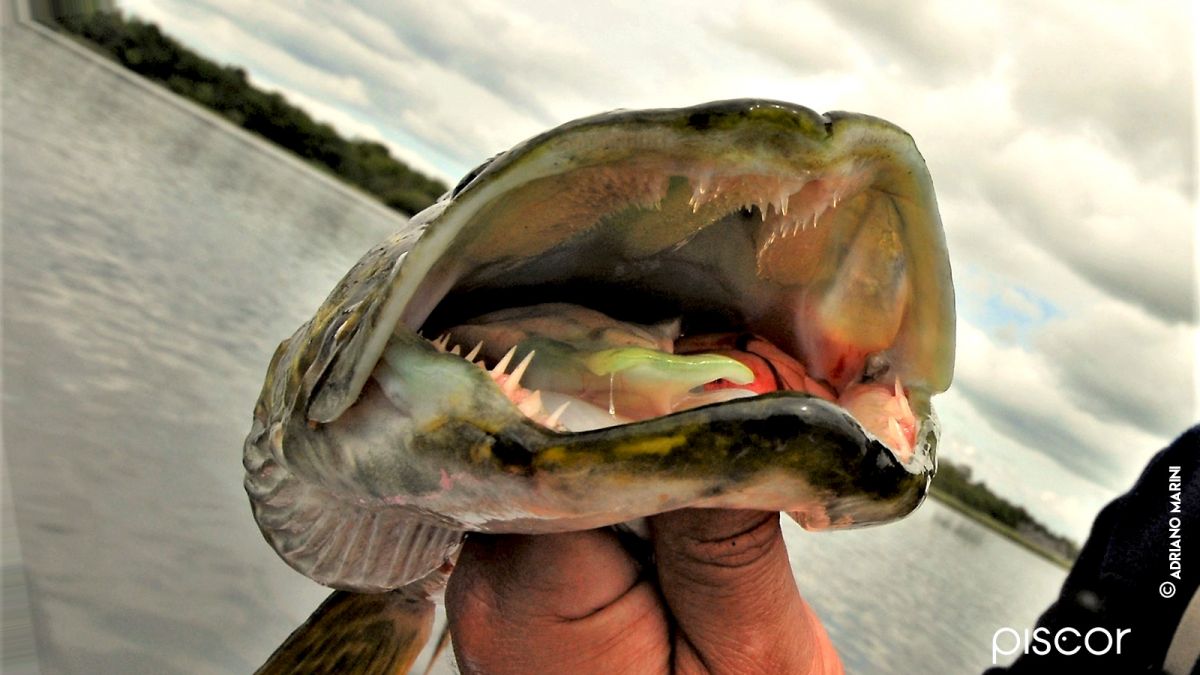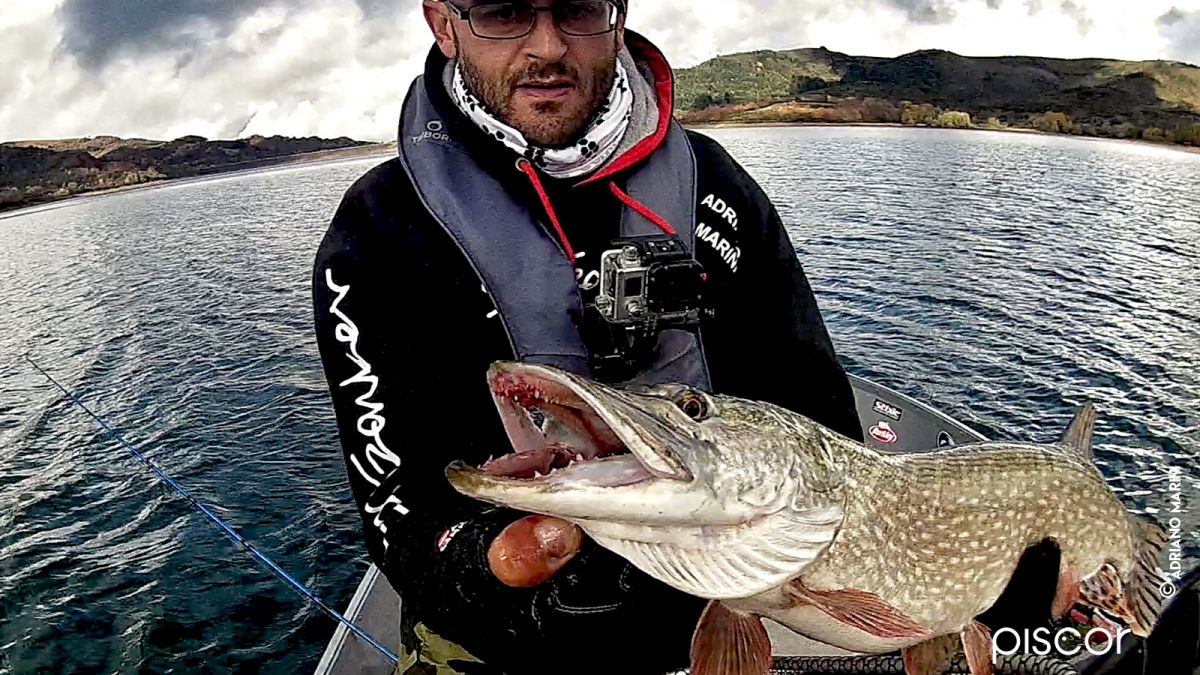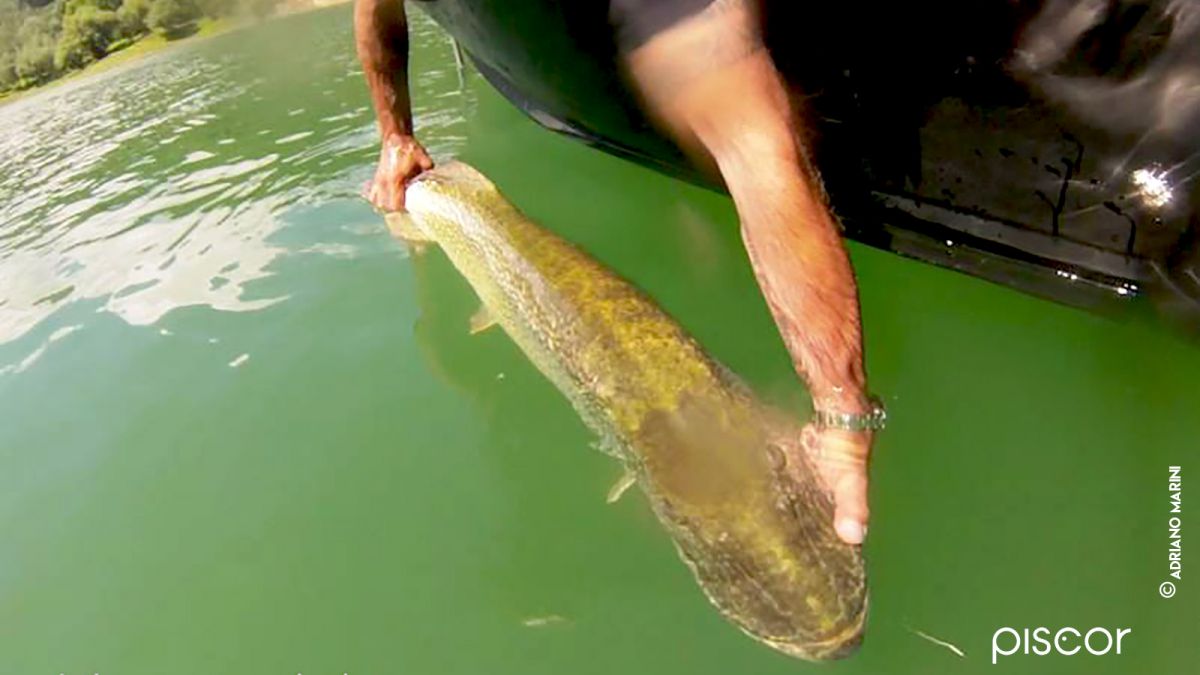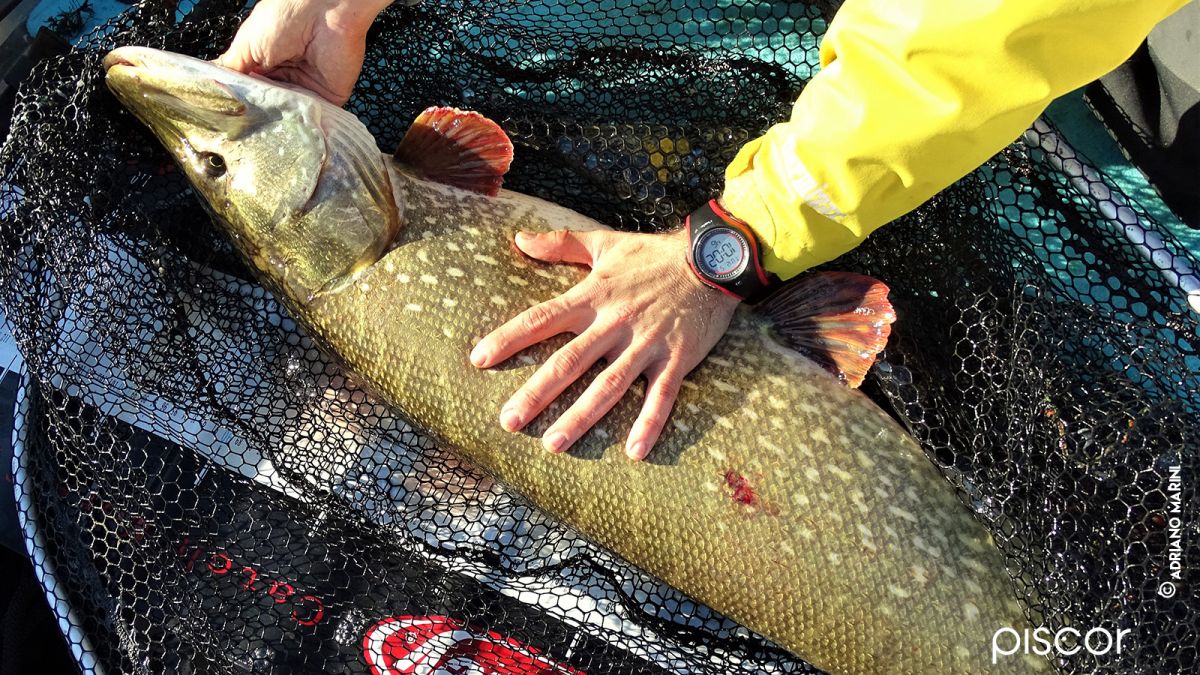The perfect catch and release does not exist, it is inevitable that the catch can cause even minimal damage to the fish. The skill of the fisherman is in providing the least possible harm, a damage that does not affect the future ability to feed, grow and reproduce pike.
Unhook a pike quickly, taking a nice photo-tropheon and putting it back in the water in perfect health to watch it return to the depths is not an easy thing, especially for the less experienced.
There are many problems and unforeseen events that can happen. You have to deal with that ankle that gets twisted, then you have to take it without hurting it (but also without cutting a hand with his sharp teeth), take a nice picture in a matter of seconds and finally the most important thing, put it back in the water as healthy as a fish.
It seems easy but, especially when you're overwhelmed by emotion or when you're new to it, it's not like that!
First of all, a fundamental premise must be made: the Pike must be released. It should be released because there are few left, in many environments this fantastic predator is disappearing. It suffers from pollution, it suffers from the mileage of professional fishermen's nets, it suffers from the cruelty of poachers, it suffers from "old manners" fishermen who fish to "take away", and last but not least, it suffers from the immissions of large non-native predators.
The result of this catastrophic picture is that there are fewer and fewer pike, and the "Big Mama" are very rare. In some lakes and rivers, the King, who was once at the top of the food chain, has now only become an occasional catch.
The first fundamental aspect, which is the basis of a correct catch & release, is the fishing equipment. I have often been called upon to help fishermen in difficulty, unable to unblock the pike they had in their landing nets, once because the pliers they had were too small (those used for trout, to be clear), once because they lacked truncation.
Fortunately, I have always managed to solve these problems and to restart these fish destined for safe death. Remember that pike is a very delicate fish, it only takes a minute out of the water (especially when it's hot) to cause permanent damage, it also suffers greatly from sudden changes in temperature (so be careful in summer) and bathymetric.
It is essential that the "fight" with pike does not last long, in order to limit stress as much as possible. Powerful rods and strong braided will meet our goal. My advice is never to go below 3 oz. of power for the rod and the 50 lbs of power for the braid.
Let's move on to the bait. We always try to use very voluminous baits. This will greatly simplify our lives when we go to unblock the Pike. On the contrary, a very small bait risks to be esophagated and to end up sticking deep inside the big mouth of the fish, making it long and difficult to unhook.
Strike! We have our Pike on the rod! Quick fight and then immediately ready with the landing net. A big pike is essential, for 2 reasons: easily ford a fish that can measure well over one meter in length, keep the fish in the water to make it rest and re-oxygenate before and after the unhooking operations.
In addition, with a large landing net we can unhook the fish directly into the water without running the risk of seeing it slip away before the ritual photo. The unhook in water is always the preferred option, with the exception of cases of deep eating that often require complex surgical operations to be carried out in the boat.
The use of the Boga Grip is absolutely not recommended, especially if the pike is large, it could cause serious and permanent damage to the mouthparts.
We have our Pike in the landing net, what do we do? If the bait is clearly visible, it is better to keep the pike in the water, make the opercular grip and using the pliers with long beak to quickly slash.
If the Pike is well and the rod is at the tip of the mouth, we can also unhook it without touching the fish, working only with the pliers. Essential accessories for this operation: landing net, long beak pliers, long cutters.
If you can't see the bait and only the cable comes out of the mouth of the fish, we have to open the mouth by means of an opercular grip. Before this step we have to try to understand how the little hooks are positioned inside the mouth of the fish, so as not to risk, during the catch, to pierce a finger or, worse, to be flooded with pike; when this happens, it leads to disastrous consequences for both the fisherman and the pike. If the bait is on the left we will operate on the right cheek, and vice versa.
In case the bait has been swallowed but the hooks are in an "easy" position, we will try to loosen it in the water, inside the landing net, with the Pike partially immersed, only the head out of the water. We will work only with the pliers or, in case of difficulty, we will cut with the trochises the tip (or the tips) of the blocked rod, releasing immediately after the pike inside the landing net.
In case the pike has swallowed the bait and the hooks are stuck in critical points (gills, palate, throat) it is necessary to have a surgical operation out of the water.
We must stay calm and comfortable, we will operate the pike in the boat, lying on a mattress previously wet. With the pike lying on its side we will open our mouths (to help us, in the absence of a fishing partner, we can use a specific mouth opener) and we will quickly decide the strategy of slamming: we have less than a minute of time.
We will enter with the pliers and we will unhook, at the first difficulty we will cut and cut, fast and decisive. This operation must be carried out with wet hands or with wet neoprene gloves. Once unloaded, we will immediately put our prey back into the landing net.
Our pike is recovering in the water, we check if it is in perfect setting, if it moves the fins well and we prepare everything for the photo. Let's take it easy, when we're ready we take the pike from the landing gear and very quickly we pose, a few quick shots and away again in the water, this time out of the landing net!
During the photo the Pike should always be kept with 2 hands: with one we do the opercular (it is better to force a little the opening of the mouth during the opercular grip, the fish will stay more still) and with the other we support it near the anal fin.
Avoid: Pike vertically (held with one hand) and strangled.
These two catches represent a danger for the fish: the vertical one on very heavy fish can cause the stretching of the vertebrae with possible negative consequences on the skeletal structure of the animal. In this case, the pike could apparently start again well, but die or remain semi-paralyzed at a later date due to the adverse consequences of the vertical grip.
Also the grip under the neck (as you can see in the photo), with the fish horizontally, can be harmful. It must be done with great delicacy, if we tighten too much we risk a dangerous compression on the internal organs, which could cause irreparable damage to the fish. Also in this case you may have the impression that the fish is restarting in perfect health, as the hypothetical damages could cause not immediate consequences.
Measuring pike
For a precise measurement, the pike should lie on the mattress. We measure from the tip of the "beak" to the end of the caudal fin. This is a quick and easy operation. If we don't have the mattress, or we don't want to take our pike out of the water, we can measure it in the water, in this case the operation will be a little more laborious and less precise but it will involve zero stress for the fish.
The opercular grip
The most correct way to catch a pike is through the famous "opercular grip". This catch is the safest for both the fish and the fisherman and is quite simple to learn. Every self-respecting pike fisherman must be able to do it!
In principle it is a matter of putting the fingers of the hand (except the thumb) between the cheek and the gills, and then closing the hand by firmly grasping the bottom, without teeth, of the mouth of the pike, opposing the thumb in the outer part of the mouth.
The grip is safe and there is no need to be afraid, at most there is the risk of some small scratch due to accidental contact with the gills with very small teeth.
First of all, we will choose the side to be operated according to the position of the bait, choosing the operculum on the side opposite to this one. Then, with the index finger, we will open the outermost operculum by sliding towards the front and then inserting all the fingers under the mouth, between the outermost cheek and the last gill of the pike.
In the smaller pike it is possible to operate also inserting only the index, or index and middle, inside the cheek.
At this point we will tighten our fingers on the lower part of the mouth, next to the tongue, and complete the closure of the grip with the thumb, which will remain outside the mouth and will put pressure on the index finger.
The grip must be strong and secure to avoid that the pike with a bowel can slip out of hand and fall ruinously into the boat, so you must tighten strongly, being careful not to exert pressure with the tip of the thumb but with the side of it, this to prevent the thin layer of skin at the bottom of the jaw can be torn or pierced.
The opercular grip will also help us to open the mouth of the pike and then to unblock it. To make him open the mouth it will be sufficient to rotate outward the hand with which we are making the grip, lowering the part at the thumb/index and pulling up that at the little finger.
For those who are new to the sport, it will take a little practice and at the beginning we will be able to make a few cuts. It is essential to overcome the fear of putting your fingers in the operculum of the pike, we must be aware that the opercular is a secure grip.
It will be better to do the first tests with the pike on the landing net and not inside the boat, so that in case of accidental fall we will not damage the fish.
Pike "gassed"
The phenomenon of the Gassed Pike is given by an anomalous and excessive swelling of the swim bladder and is due to the combination of three factors: depth, temperature and speed of recovery.
When a pike is recovered from great depths, it undergoes both bathymetric stress (a rapid decrease in pressure that leads to an increase in the volume of gases) and thermal stress, due to the difference in temperature between the deeper (colder) and the surface (warmer) layers; this thermal change also causes an increase in the volume of gas contained in the bladder.
This phenomenon occurs more in summer than in winter because of the greater temperature range. The speed at which the fish rises also influences the phenomenon of gassing; a pike that is recovered very quickly tends to gass more than one that is recovered more slowly and gradually.
A fizzy fish tends to float on its side, has difficulty in maintaining its vertical position and will hardly be able to get back to the bottom. We are very careful to release a fish in these conditions, it could start energetically as a seemingly healthy fish and return to the surface of the stomach after a matter of seconds, perhaps away from our gaze, really a sad fate ...
Let's keep in mind that the Pike is a fisostom fish, whose swim bladder is directly connected, through the pneumatic duct, with the digestive system and then with the mouth. For this reason, a gassed pike should never be deflated by piercing it with needles or similar things, the best technique is to let out the excess air inside the bladder, pressing on the swollen part of the abdomen with two hands, one on each side, while we keep the fish completely immersed in water.
This manoeuvre should be carried out by gently pressing the part of the belly that has swollen and pushing with your hands in the direction of the head until you see the air bubbles coming out of the mouth. The bubbles are the signal that we are working well.
When the appearance of the Pike has returned to normal we will check if it is kept well in trim, after which we will begin with the reoxygenation and if necessary with the movement to "S". Unfortunately, this maneuver doesn't always work.
When the pike swell too much it's difficult to deflate them 100% and the risk of them coming back to the surface is high. On the other hand, a very inflated pike is an indication of little competence on the part of the fisherman, in fact, when it is very hot you should never fish in depth, and even in the cold season you should never bring our bait below the limit of 10/15 meters.
Last step, the release
We are with the Pike in the water, we hold it by the tail holding firmly the body in its narrowest point, just before the caudal fin. If our friend is still a bit dazed because of the forced apnea and the stress to which we have submitted him, we will not let it go immediately, we will keep it firmly and we will help his reoxygenation by moving him back and forth, then we will alternate the forward/reverse movement with that of the "S", which consists in moving the pike laterally (always keeping it by the tail) drawing an 8 with the hand, so as to create the shape of the letter S with the body of the Pike.
This "S" movement is fundamental, as it is during this phase that the Pike will signal us that it has recovered and that it is ready to start swimming again. During the "S" the body of the Pike slowly regains strength, this movement gives him the stimulus to swim as it simulates his finning.
The signal to release it will be when our friend, in perfect vertical position, will begin to reactivate his muscles and to "force" on our movement, as if the "S" wanted to do it alone, without our help. This operation can take from a few seconds to many minutes.
If the Pike is suffering, it takes a lot of patience.
We reinforce our baits
Our friends can be very big and powerful so it is a must to be careful, when we buy a bait, that it is armed in a decent way, with small rods and split rings at the height of the power of a fish that can reach 20 kg in weight.
I've often seen little hooks that were falling asleep during the last desperate escape under the boat, when short, all the power of a headboard or a jump goes to weigh on the hook-split-mosquettish.
Some baits have exactly the opposite problem, the rods are too thick, very strong but difficult to cut with the cutters in case of need, even these will need to be replaced.
Personally, I replace the rods that I think are too weak or too thick with the more robust Owner "ST36BC" or Berkley "Fusion Treble" of the same size or slightly larger than the original ones (1/0 , 2/0 or 3/0). These types of rods are very sturdy but easy to cut with the cutters because the steel used has a very thin wire.
I also replace the split rings too small with Ownerer or Gamakatsu of greater poundage. I will never tire of remembering that, to protect the fish, pike are caught with more than robust equipment.
The pike is not a great fighter, but in terms of explosive force is the number one fighter! It can let itself be recovered without putting up resistance for meters and then start in the opposite direction releasing in a matter of seconds a force such as to put in crisis most of the equipment.
Specifically, the equipment will have to cope with an explosion of aggressiveness of a few seconds, short but powerful. Never underestimate it!

